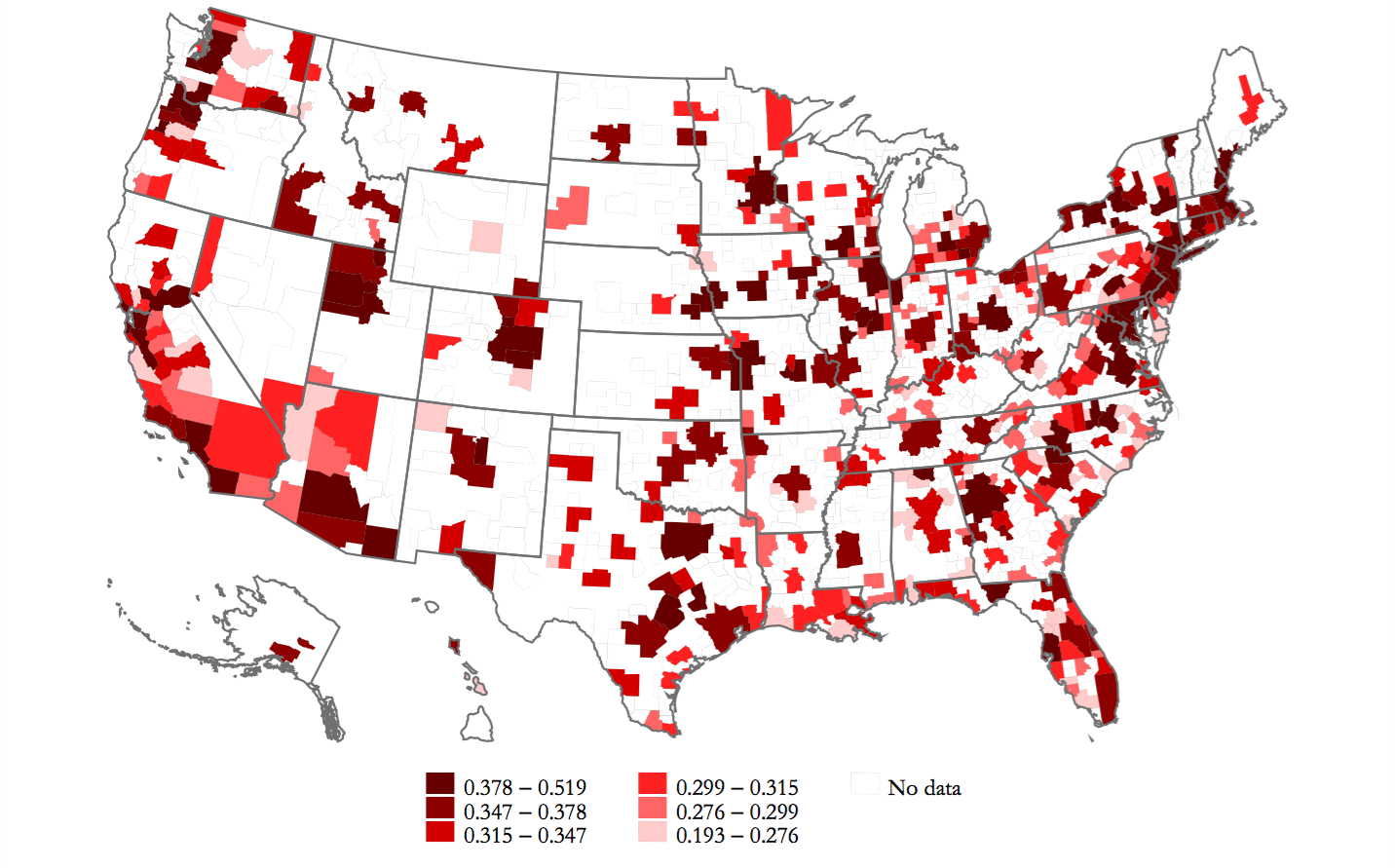Evaluating the economic impact of “social distancing” measures taken to arrest the spread of Covid-19 raises a fundamental question about the modern economy: How many jobs can be performed at home? Jonathan Dingel and Brent Neiman classified the feasibility of working at home for all occupations: In the United States, it’s 37 percent of jobs.

Evaluating the economic impact of “social distancing” measures taken to arrest the spread of Covid-19 raises a number of fundamental questions about the modern economy: How many jobs can be performed at home? What share of total wages are paid to such jobs? How does the scope for working from home vary across cities or industries?
To answer these questions, we classify the feasibility of working at home for all occupations and merge this classification with occupational employment counts for the United States.
Our approach is in a similar spirit to what Blinder (2009) did for outsourcing and what Mas and Pallais (forthcoming) have done for alternative work arrangements.
Classifying Occupations
Our feasibility measure is based on responses to two Occupational Information Network (O*NET) surveys covering “work context” and “generalized work activities.” For example, if answers to those surveys reveal that an occupation requires daily “work outdoors” or that “operating vehicles, mechanized devices, or equipment” is very important to that occupation’s performance, we determine that the occupation cannot be performed from home.
We merge this classification of O*NET occupations with information from the US Bureau of Labor Statistics (BLS) on the prevalence of each occupation in the United States, as well as in particular US cities and industries.
Dingel and Neiman (2020) offers a more detailed description of our classification method as well as an accompanying replication package that allows researchers to modify this classification scheme to produce results based on their own assessment of the plausibility of working at home for each type of job.
We hope our code will also be used by others to evaluate the share of jobs in other countries that can be performed at home.
Results for the United States
Our classification implies that 37 percent of US jobs can plausibly be performed at home.
We obtain our estimate by identifying job characteristics that clearly rule out the possibility of working entirely from home, neglecting many characteristics that would make working from home difficult. For example, our classification codes 98 percent of the 8.8 million teachers as able to work from home, which is consistent with the large number of schools currently employing remote learning.
Our estimate is therefore an upper bound on what might be feasible and greatly exceeds the share of jobs that in fact have been performed entirely at home in recent years.
According to the 2018 American Time Use Survey, less than a quarter of all full-time workers work at all from home on an average day, and even those workers typically spend well less than half of their working hours at home. Mas and Pallais (forthcoming) report that less than 13 percent of full- and part-time jobs have a formal “work-from-home” arrangement. They write that the “median worker reports that only 6 percent of their job could be feasibly done from home,” but plenty of jobs, including those in “computer and mathematical” and “business and financial operations” can do a majority of their work from home.
We note that, in the context of the response to Covid-19, there is an important distinction between being able to do most and all of one’s work at home.
Workers in occupations that can be performed at home typically earn more. If we assume all occupations involve the same number of hours of work, the 37 percent of jobs that can plausibly be performed at home account for 46 percent of all wages.
There is a significant variation in this percentage across cities and industries. More than 45 percent of jobs in San Francisco, San Jose, and Washington, DC could be performed at home, whereas this is the case for 30 percent or less of the jobs in Fort Myers, Grand Rapids, and Las Vegas (see Figure 1).
Whereas most jobs in finance, corporate management, and professional and scientific services could plausibly be performed at home, very few jobs in agriculture, hotels and restaurants, or retail could be.
Readers can download tables that report the share of jobs that can be done at home for each US metropolitan statistical area and for each (broadly defined) industry here.

As an alternative to our baseline classification, we each manually assigned values of 0, 0.5, or 1 to each 5-digit code in the US Standard Occupational Classification system based on introspection. Averaging our two judgments resulted in values of 0, 0.25, 0.5, 0.75, and 1. Using this alternative measure produces highly similar results.
Conclusions
Due to Covid-19, many employees are unable to travel to work. Identifying which jobs cannot be performed from home may be useful as policymakers try to target social insurance payments to those that most need them.
Likewise, the share of jobs that could be performed at home is an important input to predicting the economy’s performance during this or subsequent periods of social distancing.
We note, however, that it is not straightforward to use these values to estimate the share of output that would be produced under stringent stay-at-home policies. An individual worker’s productivity may differ considerably when working at home rather than her usual workplace.
More importantly, there are likely important complementarities between jobs that can be performed at home and those that cannot. Incorporating our measures together with these richer considerations is a fruitful avenue for future research.
Editor’s note: This piece is based on a recent Becker-Friedman Insitute working paper, How Many Jobs Can be Done at Home?
Pro Market is dedicated to discussing how competition tends to be subverted by special interests. The posts represent the opinions of their writers, not necessarily those of the University of Chicago, the Booth School of Business, or its faculty. For more information, please visit ProMarket Blog Policy.





